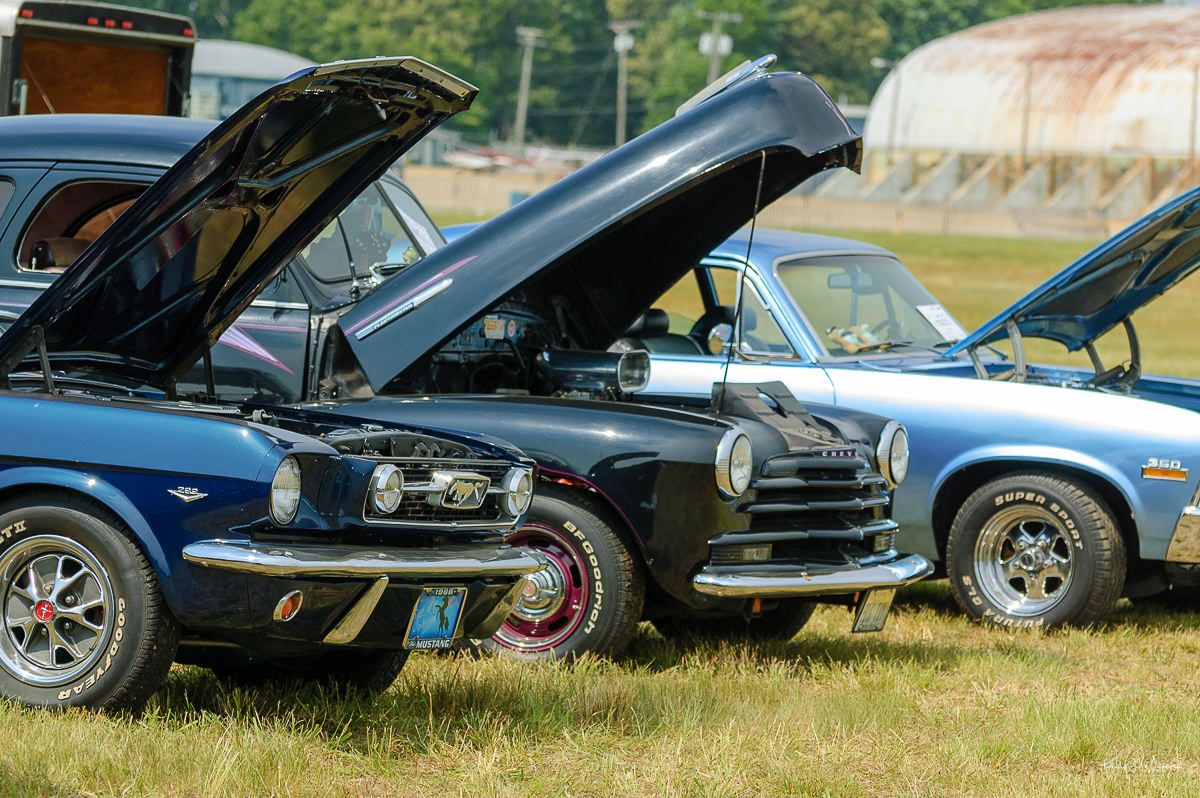
In the world of pickup trucks, it’s a constant arms race. Manufacturers are sinking fortunes into top-tier design, advanced engineering, and cutting-edge technology, pushing these vehicles far beyond their humble, utilitarian beginnings. We’re living in a golden age where full-size behemoths, mid-size workhorses, and even efficient compact trucks are all vying for a spot in your driveway, each promising unparalleled capability and rugged style.
But here’s the thing about a fiercely competitive market: not everyone can be a winner. For every Ford F-Series or Chevy Silverado tearing up the sales charts, there’s a lineup of perfectly capable, sometimes even innovative, trucks that just aren’t resonating with the buying public. It’s a fascinating, sometimes brutal, reality of consumer preference where even the best intentions can go awry.
So, what separates the sales superstars from the market’s wallflowers? Why do some trucks, despite their potential and often impressive features, end up gathering dust on dealer lots? We’re about to peel back the layers and take a candid look at some of the modern pickups that are currently struggling to find buyers, diving deep into the reasons why they’ve just missed the mark.

1. **Ford Ranger**
The Ford Ranger, a nameplate with a long and storied history, made its much-anticipated return to the U.S. market in 2019 after a lengthy hiatus. The goal was clear: capture a significant slice of the burgeoning midsize truck segment. However, the comeback hasn’t exactly been the triumphant charge many expected, and the Ranger hasn’t exactly been flying off the shelves.
One of the most significant hurdles the Ranger faces is the brutal competition it encounters. The midsize truck segment is packed with established players who have been consistently honing their offerings for years, leaving the Ranger to play catch-up. It’s tough to re-enter a market and immediately stand out when rivals have spent years building loyalty and refining their products.
Adding to its lukewarm reception is a pervasive perception that it’s little more than a scaled-down version of its massively popular big brother, the Ford F-150. This isn’t exactly a compliment when buyers are looking for something distinct. Furthermore, many potential buyers find the Ranger’s interior less appealing when compared to the fresh designs and feature sets offered by its rivals, making it feel a step behind from the moment you climb inside.
Then there’s the sticky issue of pricing. The Ranger’s sticker price sometimes nudges uncomfortably close to that of the F-150. For many prospective buyers, if they’re going to spend that kind of money, the allure of a full-size truck with more capability and presence often outweighs the Ranger’s midsize practicality. This pricing strategy inadvertently positions it as a less attractive budget-friendly option, trapping it between two segments without truly excelling in either.
Read more about: Haul More for Less: Our Top 12 Budget-Friendly Trucks with Impressive Towing Capacities Over 9,000 Pounds
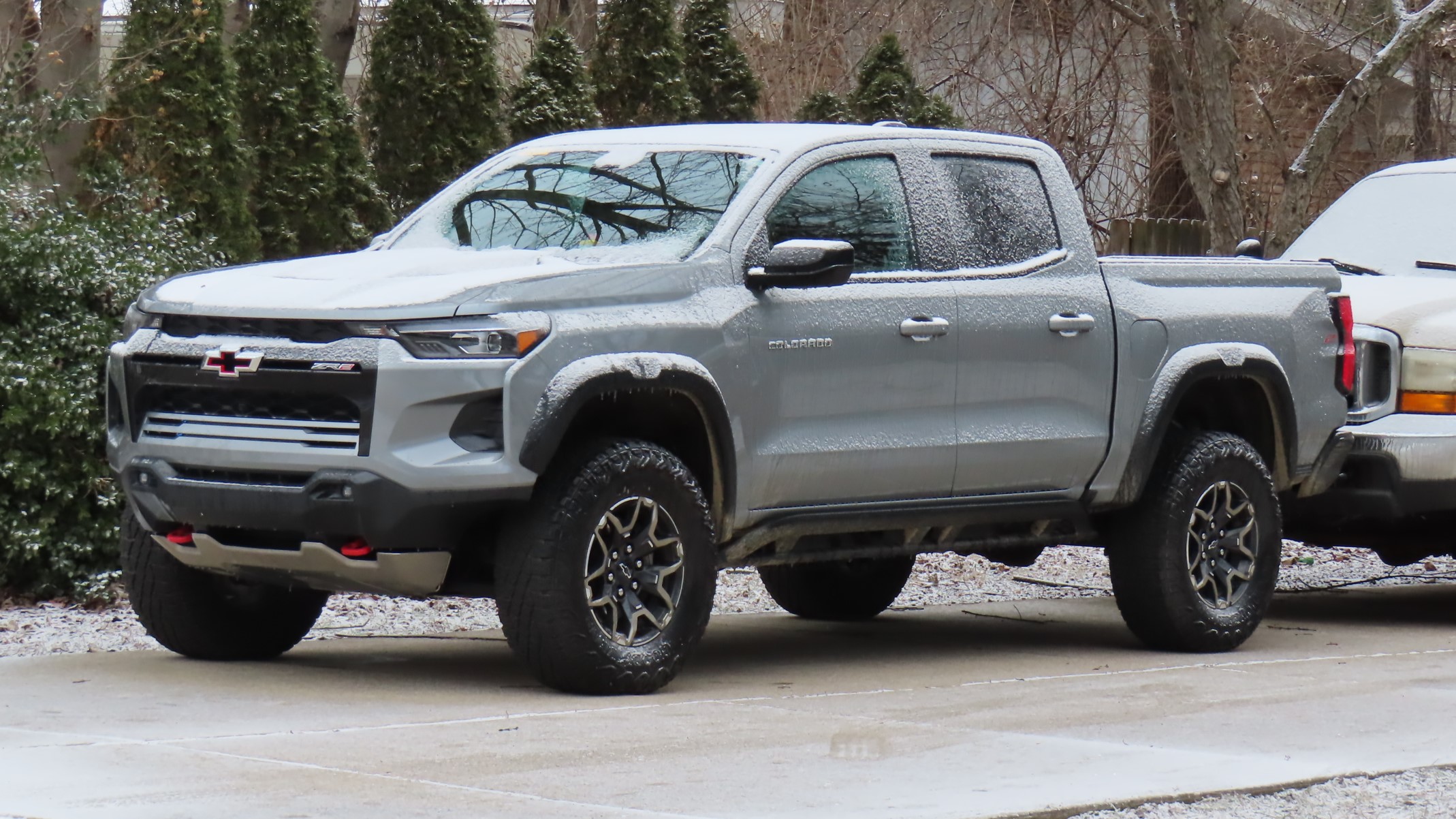
2. **Chevrolet Colorado**
The Chevrolet Colorado once held its own as a formidable contender in the midsize truck category, even enjoying a period of strong sales after its significant redesign in 2015. However, like a boxer who’s lost a step, the Colorado has since seen a noticeable decline in its popularity. It simply hasn’t kept pace with the relentless innovations rolled out by its competitors.
Many consumers are quick to point out the Colorado’s aging design as a primary reason for their waning interest. In an automotive landscape where fresh aesthetics and modern conveniences are paramount, the Colorado’s look feels, well, a bit tired. It’s hard to get excited about a vehicle that visually reminds you of yesteryear when shiny, new alternatives are just a dealership away.
Beyond the sheet metal, the lack of cutting-edge technology is another significant drawback. While the 2023 model did bring some updates, the general consensus is that they weren’t enough to genuinely sway potential buyers. The interior, in particular, feels decidedly outdated when you compare it to the sleeker, more tech-forward cabins of newer models like the Ford Maverick or the Hyundai Santa Cruz, which offer a far more modern aesthetic and a suite of desirable tech features. It’s a classic case of too little, too late, in a segment that moves at lightning speed.
Car Model Information: 2015 Chevrolet Colorado WT
Name: Chevrolet Colorado
Caption: 2024 Chevrolet Colorado Z71
Manufacturer: General Motors
Production: 2003–2012, 2014–present (US),2004–2020
(Thailand),2011–present (Brazil)
Class: Pickup truck,Pickup truck
Layout: Front-engine, rear-wheel-drive layout
Predecessor: Chevrolet S-10,Chevrolet D-Max,Holden Rodeo,Holden Ute
Aka: GMC Canyon,Holden Colorado
Categories: 2010s cars, 2020s cars, All-wheel-drive vehicles, All articles with dead external links, Articles with dead external links from November 2016
Summary: The Chevrolet Colorado (sharing mechanical commonality with the GMC Canyon) is a series of compact pickup trucks (mid-size since second generation) marketed by American automaker General Motors. They were introduced in 2004 to replace the Chevrolet S-10 and GMC S-15/Sonoma compact pickups. The Colorado is named after the U.S. state of Colorado, while the Canyon took its name from the deep chasm between cliffs.
Get more information about: Chevrolet Colorado
Buying a high-performing used car >>>
Brand: Chevrolet Model: Colorado
Price: $20,495 Mileage: 23,450 mi.
Read more about: Driving Value: Consumer Reports’ Top SUVs Under $40,000 for Savvy Buyers
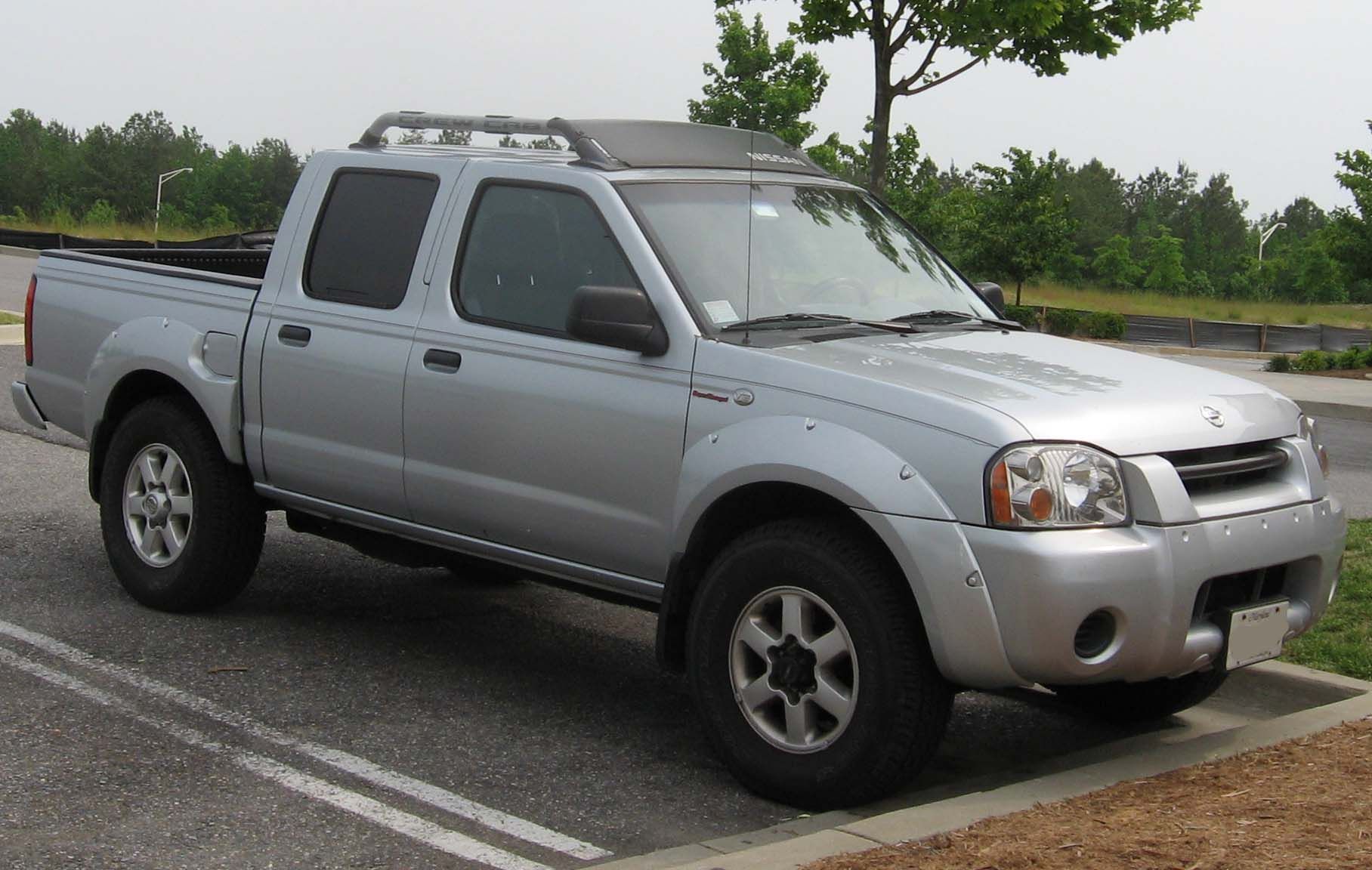
3. **Nissan Frontier**
The Nissan Frontier has had a long, arduous journey in the quest for buyer attention, largely hobbled by what can only be described as a stubbornly dated design and technology. Before its much-needed 2022 redesign, the Frontier had coasted for over a decade without any significant updates. Imagine that in the fast-moving world of trucks! This prolonged neglect left it woefully behind competitors in terms of innovation, appeal, and frankly, relevance.
When the new model finally arrived, Nissan, understandably, harbored hopes of reigniting interest and clawing back some market share. The redesign certainly brought a fresh look and some genuinely improved features. However, the market’s response has been, to put it mildly, tepid. It seems that a fresh coat of paint and some new tech weren’t quite enough to completely erase its long-standing reputation as an outdated choice.
Many consumers, having grown accustomed to the Frontier’s former self, still perceive it as lacking when stacked against more dynamic and feature-rich alternatives, notably the ever-popular Toyota Tacoma. The ghosts of its past still haunt its present sales figures. It’s a hard lesson in automotive marketing: once a reputation for being behind the curve takes hold, it’s incredibly difficult to shake off, even with a sincere effort to modernize.
Car Model Information: 2015 Nissan Frontier PRO-4X
Categories: All set index articles, Articles with short description, Nissan vehicles, Set index articles on cars, Short description is different from Wikidata
Summary: The Nissan Frontier is a nameplate used on three different pickup truck models by Nissan:
Nissan Frontier (international), an alternative nameplate for the NP300/Navara on some markets
Nissan Frontier (North America), a rebadged NP300/Navara from 1997 to 2021, then became a separate model since 2021
Nissan Frontier Pro, a rebadged Dongfeng Z9 PHEV that will be available from 2025.
Get more information about: Nissan Frontier
Buying a high-performing used car >>>
Brand: Nissan Model: Frontier
Price: $17,865 Mileage: 154,112 mi.
Read more about: Beyond the Badge: Why a ‘Bargain’ Used Luxury Car Can Lead to Unexpected Financial Headaches and Repair Nightmares
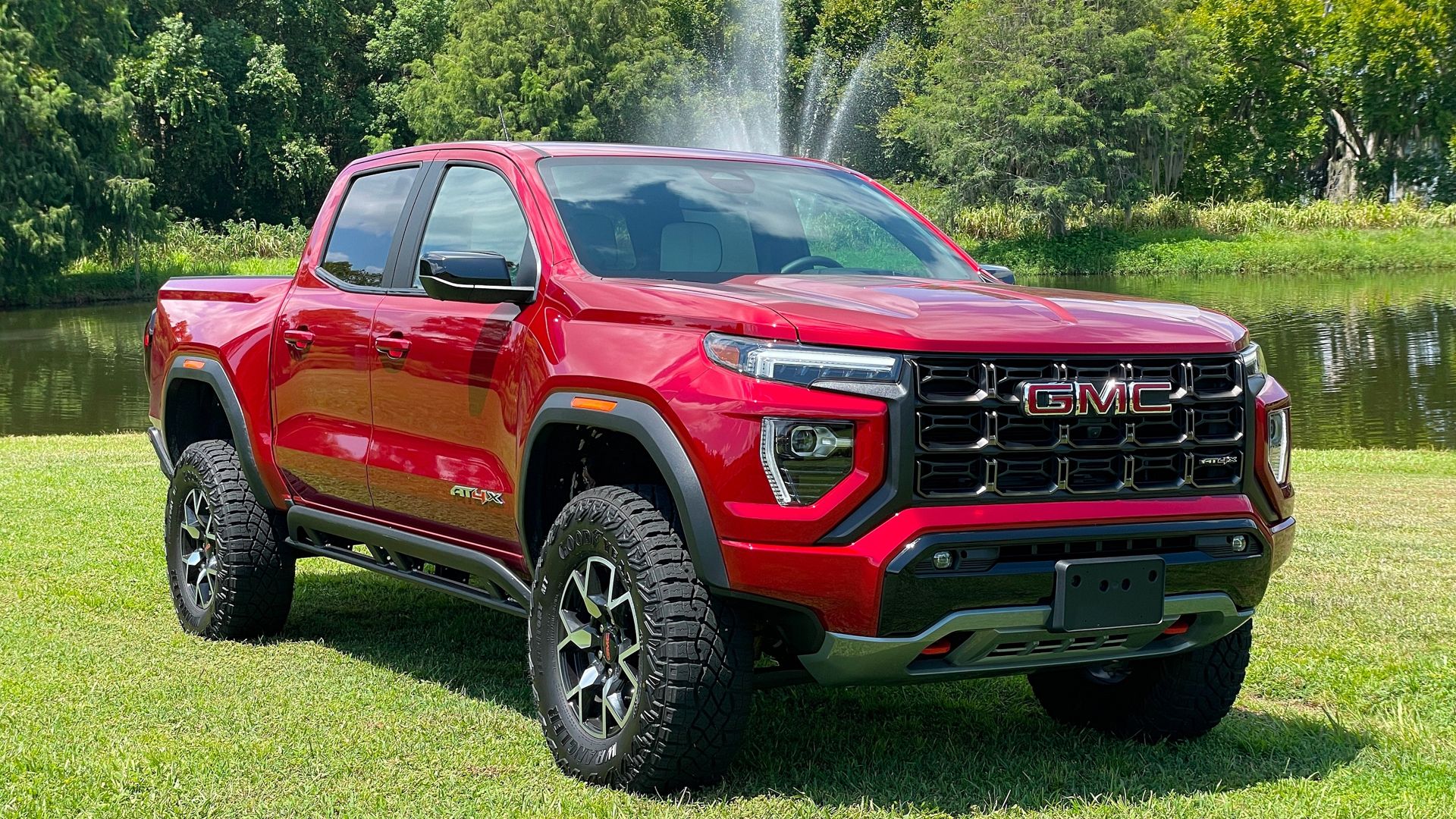
4. **GMC Canyon**
The GMC Canyon finds itself in a peculiar predicament, largely mirroring the challenges faced by its platform-mate, the Chevrolet Colorado. This truck, too, is wrestling with issues stemming from an aging design and a noticeable absence of modern, must-have features. The Canyon aims to carve out a niche for itself by appealing to buyers who desire a more upscale midsize truck experience, yet it has struggled to significantly differentiate itself from the Colorado in ways that truly matter to consumers.
While GMC attempts to elevate the Canyon through its Denali trim, offering a dash of luxury and premium touches, this sophistication comes with a hefty price tag. And here’s the rub: many potential buyers just aren’t willing to shell out a premium when more advanced features and contemporary designs are readily available in similarly priced or even cheaper competitors. It’s a tough sell when the ‘luxury’ feels more like an old friend trying to keep up with the cool kids.
In a market that relentlessly evolves, the lack of a substantial, game-changing refresh has left the Canyon struggling to gain traction. It’s trapped in a cycle where its intended premium appeal is undermined by its underlying familiarity with a less-luxurious sibling, making it a head-scratcher for discerning buyers looking for genuine value and cutting-edge features. Sometimes, merely being ‘upscale’ isn’t enough; you need to genuinely stand out.
Car Model Information: 2021 GMC Canyon Denali
Name: Chevrolet Colorado
Caption: 2024 Chevrolet Colorado Z71
Manufacturer: General Motors
Production: 2003–2012, 2014–present (US),2004–2020
(Thailand),2011–present (Brazil)
Class: Pickup truck,Pickup truck
Layout: Front-engine, rear-wheel-drive layout
Predecessor: Chevrolet S-10,Chevrolet D-Max,Holden Rodeo,Holden Ute
Aka: GMC Canyon,Holden Colorado
Categories: 2010s cars, 2020s cars, All-wheel-drive vehicles, All articles with dead external links, Articles with dead external links from November 2016
Summary: The Chevrolet Colorado (sharing mechanical commonality with the GMC Canyon) is a series of compact pickup trucks (mid-size since second generation) marketed by American automaker General Motors. They were introduced in 2004 to replace the Chevrolet S-10 and GMC S-15/Sonoma compact pickups. The Colorado is named after the U.S. state of Colorado, while the Canyon took its name from the deep chasm between cliffs.
Get more information about: Chevrolet Colorado
Buying a high-performing used car >>>
Brand: GMC Model: Canyon
Price: $36,490 Mileage: 24,577 mi.
Read more about: Why American Pickup Trucks Became Colossal: Unpacking the Complex Web of Regulations, Culture, and Market Forces

5. **Honda Ridgeline**
Ah, the Honda Ridgeline. This is a pickup that consistently defies traditional truck stereotypes, and therein lies both its unique charm and its perpetual struggle to find a wider audience. Its unibody construction, a characteristic more commonly found in SUVs, bestows it with a remarkably car-like driving experience. This particular trait undeniably appeals to a segment of buyers who prioritize comfort and a smoother ride over ruggedness.
However, this very feature is a double-edged sword, as it tends to alienate the vast majority of traditional truck buyers. These are the folks who live and breathe body-on-frame construction, demanding the raw, unadulterated performance and substantial towing capabilities typically associated with a ‘real’ truck. The Ridgeline, with its more refined demeanor, simply doesn’t speak their language when it comes to brute force.
Despite its undoubtedly comfortable ride and genuinely innovative features – like the ingenious in-bed trunk that offers secure, hidden storage – the Ridgeline’s unconventional approach to the pickup market hasn’t managed to resonate broadly. It frequently gets overlooked by those whose priorities lean heavily towards serious off-road prowess or heavy-duty hauling capabilities. In those critical areas, the Ridgeline simply doesn’t compete, and thus, remains a niche player in a mainstream world.
Car Model Information: 2024 Honda Ridgeline Sport
Name: Honda Ridgeline
Manufacturer: Honda
Caption: 2022 Honda Ridgeline
Production: 2005–early 2015,2016–present
ModelYears: 2006–2014,2017–present
Assembly: Alliston, Ontario
Class: Pickup truck#Mid-size pickup truck
BodyStyle: 4-door pickup truck
Layout: ubl
Categories: 2010s cars, All-wheel-drive vehicles, All Wikipedia articles written in American English, Articles with short description, CS1 maint: multiple names: authors list
Summary: The Honda Ridgeline is a mid-size pickup truck manufactured and marketed by Honda since the 2006 model year, over two generations in a unibody, crew–cab, short-box configuration with a transverse-mounted engine.
Get more information about: Honda Ridgeline
Buying a high-performing used car >>>
Brand: Honda Model: Ridgeline
Price: $31,576 Mileage: 22,031 mi.
Read more about: Unpacking the Data: The Most Dependable Trucks for Hard Workers in 2025, According to Expert Analysis and Owner Reports
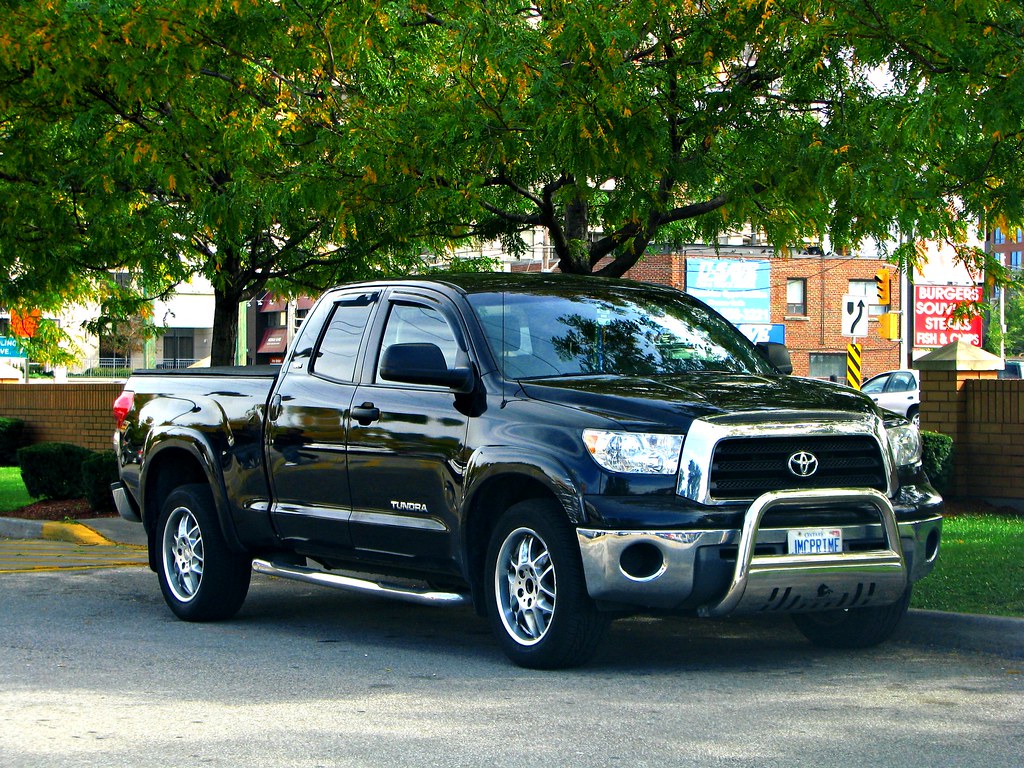
6. **Toyota Tundra**
The Toyota Tundra, for many years, was a solid, if not spectacular, player in the full-size pickup market. Known for its durability and Toyota’s bulletproof reputation for reliability, it held a respectable position. However, it’s undeniable that the Tundra has faced considerable challenges in maintaining its market share, often lagging behind its American rivals in crucial areas like technological advancements and fuel efficiency—factors that have become increasingly vital for today’s truck buyers.
The 2022 redesign was Toyota’s major offensive to address these glaring issues, introducing a much-anticipated new hybrid powertrain option and a suite of updated features. It was a bold move, dropping the traditional V8 in favor of a 3.5-liter twin-turbo V6 and an optional i-FORCE MAX hybrid system, boosting power and, theoretically, efficiency. The interior also saw massive improvements, particularly on higher trims, with large touchscreens and digital gauge clusters making it far more competitive.
However, the question remains: are these changes enough to truly lure buyers away from the seemingly unshakeable dominance of Ford’s F-Series or the RAM 1500? These competitors consistently lead the segment in sales, consumer preference, and often, cutting-edge innovation. While the Tundra’s sales did increase by over 31 percent compared to the previous year, it’s still playing catch-up against giants who have refined their offerings over decades. Early hiccups with the new generation’s introduction, despite Toyota’s strong engineering, haven’t helped it gain immediate widespread acceptance among a skeptical buyer base.
Car Model Information: 2023 Toyota Tundra Hybrid TRD Pro
Name: Toyota Tundra
Manufacturer: Toyota
Production: May 1999 – present
ModelYears: 2000–present
Assembly: San Antonio,Texas
Class: Pickup truck#Full-size pickup truck
Layout: unbulleted list
Related: Toyota Sequoia
Predecessor: Toyota T100
Caption: 2022 Toyota Tundra Limited
Categories: 2000s cars, 2010s cars, 2020s cars, All-wheel-drive vehicles, All Wikipedia articles written in American English
Summary: The Toyota Tundra is a full-size pickup truck manufactured in the United States by the Japanese manufacturer Toyota since May 1999. The Tundra was the second full-size pickup to be built by a Japanese manufacturer (the first was the Toyota T100), but the Tundra was the first full-size pickup from a Japanese manufacturer to be built in North America. The Tundra was nominated for the North American Truck of the Year award and was Motor Trend magazine’s Truck of the Year in 2000 and 2008. Initially built in a new Toyota plant in Princeton, Indiana, production was consolidated in 2008 to Toyota’s San Antonio, Texas, factory.
Get more information about: Toyota Tundra
Buying a high-performing used car >>>
Brand: Toyota Model: Tundra
Price: $57,995 Mileage: 37,026 mi.
Read more about: Haul More for Less: Our Top 12 Budget-Friendly Trucks with Impressive Towing Capacities Over 9,000 Pounds
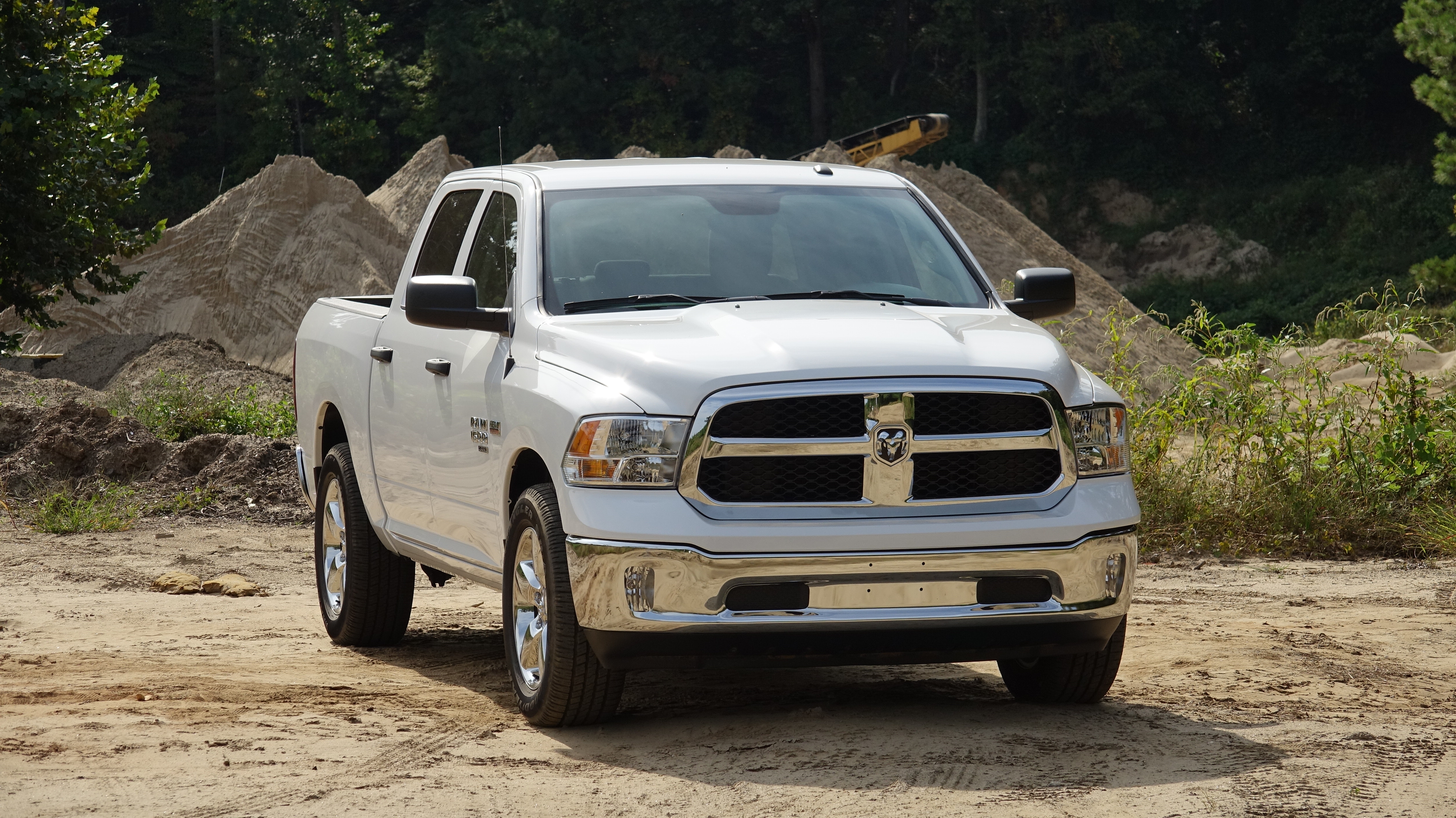
7. **RAM 1500 Classic**
The RAM 1500 Classic holds a unique, yet precarious, position in the pickup truck market. It’s essentially a continuation of the previous-generation RAM 1500, kept alive as a budget-friendly alternative to the sleeker, more advanced new RAM 1500 models. While it certainly offers a cost-effective entry point into the full-size truck segment, its dated design and noticeable lack of modern amenities often serve as significant deterrents for potential buyers.
In a market where innovation is king and buyers are increasingly drawn to contemporary offerings, the Classic struggles to make a compelling case beyond its price tag. It provides a no-frills option, which can appeal to very price-conscious consumers or large fleets looking for basic utility without the bells and whistles. However, for the average individual buyer, the Classic’s appeal quickly diminishes.
As the industry pushes forward with advanced technology, enhanced safety features, and increasingly sophisticated interiors, the Classic finds itself further marginalized. Buyers today expect seamless infotainment, comprehensive driver-assistance systems, and cabins that offer comfort and connectivity. The RAM 1500 Classic, by design, simply doesn’t deliver on these evolving expectations, relegating it to a very specific, and shrinking, corner of the market. It’s a testament to the fact that sometimes, even a familiar face isn’t enough to stay relevant.” “_words_section1”: “1945
Car Model Information: 2023 Toyota Camry LE
Name: Dodge Ram / Ram pickup
Caption: 2017 Ram 1500 Express
Manufacturer: Dodge
ModelYears: 1981–present
Production: October 1980 – present
Class: Pickup truck#Full-size pickup truck,Pickup truck#Heavy-duty pickup truck
Layout: Front-engine, rear-wheel-drive layout,rear-wheel drive
Predecessor: Dodge D series
Categories: 1990s cars, 2000s cars, 2010s cars, 2020s cars, All-wheel-drive vehicles
Summary: The Ram pickup (marketed as the Dodge Ram until 2010 when Ram Trucks was spun-off from Dodge) is a full-size pickup truck manufactured by Stellantis North America (formerly Chrysler Group LLC and FCA US LLC) and marketed from 2010 onwards under the Ram Trucks brand. The current fifth-generation Ram debuted at the 2018 North American International Auto Show in Detroit, Michigan, in January of that year.
Previously, Ram was part of the Dodge line of light trucks. The Ram name was introduced in October 1980 for model year 1981, when the Dodge D series pickup trucks and B series vans were rebranded, though the company had used a ram’s-head hood ornament on some trucks as early as 1933.
Ram trucks have been named Motor Trend magazine’s Truck of the Year eight times; the second-generation Ram won the award in 1994, the third-generation Ram heavy-duty won the award in 2003, the fourth-generation Ram Heavy Duty won in 2010 and the fourth-generation Ram 1500 won in 2013 and 2014, and the current fifth-generation Ram pickup became the first truck in history to win the award four times, winning in 2019, 2020, 2021 and most recently, 2025.
Get more information about: Ram pickup
Buying a high-performing used car >>>
Brand: RAM Model: 1500 Classic
Price: $25,900 Mileage: 23,699 mi.
Read more about: The Definitive Consumer Report: Unmasking the Vehicles and Manufacturers Plagued by the Most Recalls in Automotive History
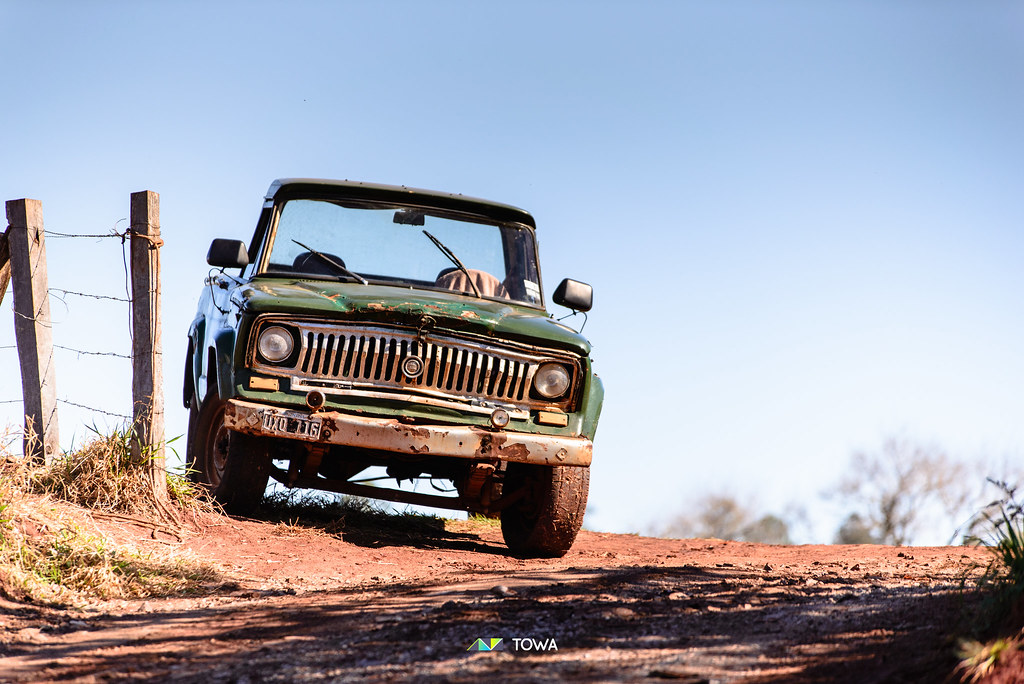
8. **Jeep Gladiator**
The Jeep Gladiator, what a beast, right? It promises the legendary off-road prowess of a Wrangler with the added utility of a pickup bed. On paper, it sounds like the dream machine for adventure seekers. You get that distinctive open-air driving experience that only a Jeep can offer, combined with enough space to haul your gear for a weekend in the wilderness. It’s truly a unique proposition in a market flooded with increasingly homogenous trucks.
However, the Gladiator hasn’t quite managed to conquer the sales charts as a bestseller. Its distinctive design and niche appeal mean it primarily attracts a specific segment of the market—those who absolutely crave the Jeep lifestyle. The high price point, often considerably more expensive than traditional pickups offering similar or even greater utility, proves to be a significant barrier for many potential buyers. It’s a tough pill to swallow when you’re looking for practical capability without breaking the bank.
Beyond the sticker shock, the Gladiator also faces some uphill battles when it comes to everyday usability. Its on-road performance, while improved over previous Wranglers, still leaves much to be desired compared to more refined competitors. And let’s not even get started on the fuel economy, which, let’s be honest, is not exactly its strong suit. In an era where efficiency is increasingly prioritized, the Gladiator’s thirst for fuel can be a deal-breaker.
Ultimately, while the Gladiator offers unparalleled off-road fun and undeniable curb appeal, it struggles to compete against more affordable and efficient models when practicality becomes the primary concern. It lives in its own world, which is great for the die-hard Jeep fan, but it’s a small world in the grand scheme of the broader truck market, leaving it a fascinating but underselling niche player.
Car Model Information: 2020 Jeep Gladiator Rubicon
Name: Jeep Gladiator (JT)
Aka: Jeep JT (Mexico)
Manufacturer: Jeep
Production: April 2019–present
ModelYears: 2020–present
Assembly: Toledo, Ohio
Designer: Taylor Langhals
Engine: ubl
Transmission: List of Aisin transmissions#Longitudinal rear-wheel drive,Manual transmission
Class: Mid-size,pickup truck
BodyStyle: 4-door pickup truck with removable roof and doors
Related: Jeep Wrangler (JL)
Layout: Front-engine, four-wheel-drive layout
Predecessor: Jeep CJ#CJ-10,Jeep Comanche
Weight: convert
Wheelbase: 137.3 in
Abbr: on
Lk: on
Length: 218.0 in
Width: 73.8 in
Height: convert
Categories: All-wheel-drive vehicles, Articles with short description, CS1 Japanese-language sources (ja), Cars introduced in 2018, Commons category link is on Wikidata
Summary: The Jeep Gladiator is a mid-size pickup truck manufactured by the Jeep division of Stellantis North America (formerly FCA US). It was introduced at the 2018 Los Angeles Auto Show on November 28, 2018, and went on sale in the spring of 2019 as a 2020 model. Based on the same platform as the Wrangler JL, the Gladiator is Jeep’s first pickup truck since the Comanche was discontinued in 1992, although the very similar dual-cab AEV Brute was custom-made using the Wrangler platform from 2013 until 2017 by American Expedition Vehicles under license.
The first markets outside the Americas were Australia and New Zealand. It is now also marketed in China, Japan, South Korea, South Africa as well as in selected nations in South America, Europe, and Southeast Asia.
Get more information about: Jeep Gladiator (JT)
Buying a high-performing used car >>>
Brand: Jeep Model: Gladiator
Price: $34,990 Mileage: 59,884 mi.
Read more about: Why American Pickup Trucks Became Colossal: Unpacking the Complex Web of Regulations, Culture, and Market Forces

9. **Mitsubishi Triton**
Ah, the Mitsubishi Triton, known as the L200 in some corners of the globe. This truck faces what can only be described as an epic uphill battle in the fiercely competitive pickup segment. While it undeniably offers decent off-road capabilities and, in some markets, a robust and reliable diesel engine that can certainly get the job done, its overall package just isn’t compelling enough to grab a larger slice of the pie from its more dominant rivals.
When you line the Triton up against the sales giants, it’s clear it’s often overshadowed. Competitors routinely outclass it by providing a more attractive blend of performance, cutting-edge technology, and creature comforts. The Triton, for all its rugged charm, can feel a bit behind the curve in an industry that’s constantly pushing boundaries, leaving buyers wanting more of that shiny, new tech that other brands are offering.
Adding to its struggles, especially in North American markets, is Mitsubishi’s somewhat limited brand presence. The lack of extensive dealer networks and a smaller marketing footprint mean the Triton remains a rare choice among pickup enthusiasts, often relegated to the ‘if you know, you know’ category. It’s a shame, because beneath the surface, there’s a capable truck, but it’s one that’s drowning in a sea of more prominent alternatives.
It truly highlights how crucial brand recognition and continuous innovation are in this cutthroat segment. The Triton might be a perfectly serviceable truck, but in a market where perception often equals reality, it’s simply not making enough noise to stand out from the crowd. Sometimes, being merely “decent” isn’t enough to make a dent.
Read more about: Unearthing Hidden Performance: 14 Underrated Sports Cars That Defy Expectations for Today’s Performance Seekers
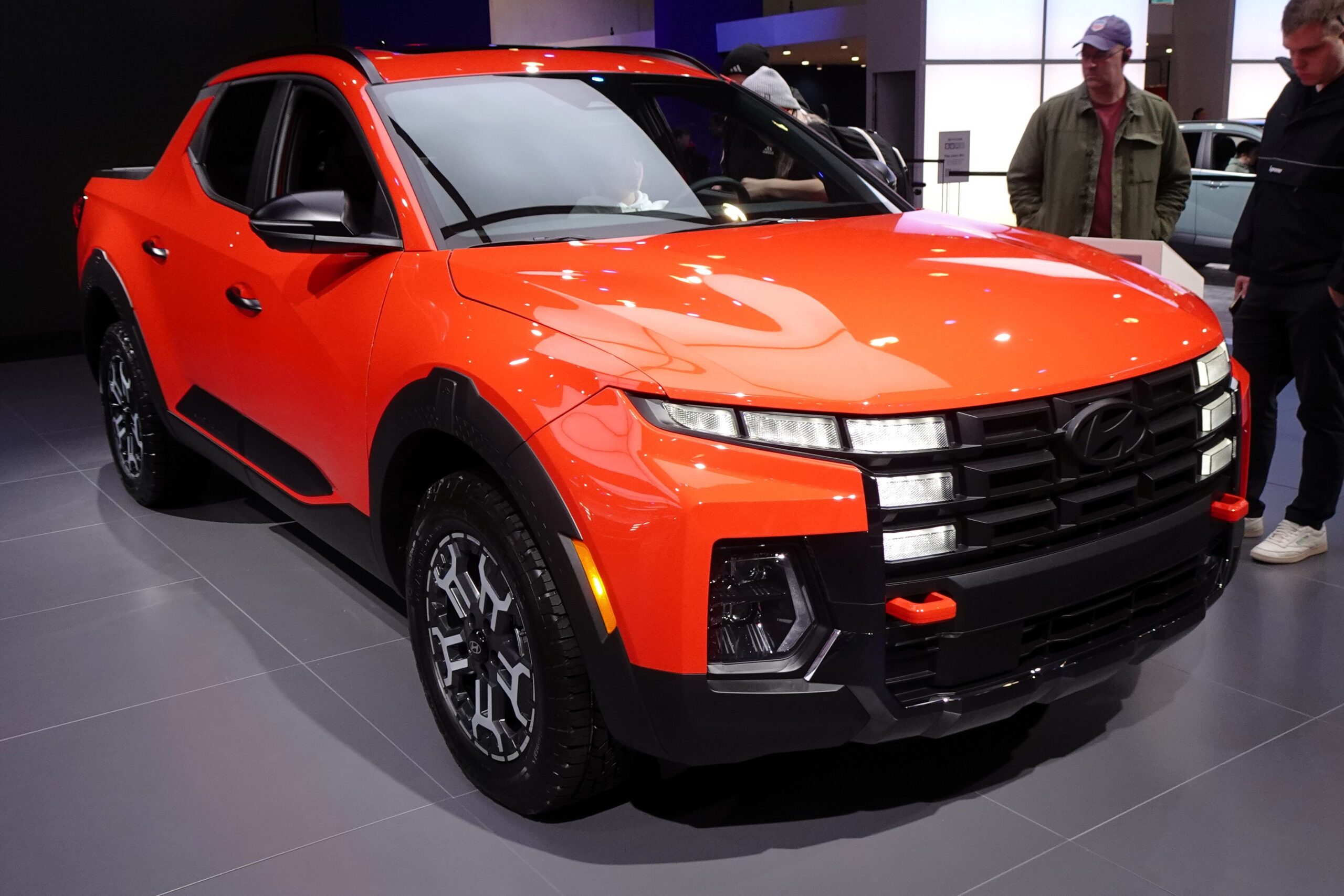
10. **Hyundai Santa Cruz**
The Hyundai Santa Cruz rolled onto the scene as a fresh, intriguing entry into the compact pickup market, promising to blend the comfort and maneuverability of an SUV with just enough utility to qualify as a pickup. It’s an innovative approach, with an undeniably appealing and modern design that certainly turns heads. This isn’t your grandpappy’s work truck, that’s for sure; it’s designed for a different kind of buyer, one who perhaps lives in the city and needs something versatile for their active lifestyle.
Despite its fresh face and clever packaging, the Santa Cruz hasn’t quite managed to capture the attention of traditional truck buyers. See, the folks who buy trucks often prefer established brands and models with a long history of rugged capability, and the Santa Cruz’s car-like ride, while comfortable, just doesn’t scream “workhorse” in the same way a body-on-frame truck does. It’s a perceptual hurdle that’s proving hard to clear.
Its smaller size and agile handling make it absolutely ideal for navigating urban environments, easily slotting into tight parking spots and zipping through traffic where a full-size truck would struggle. But these very features might not resonate with those seeking the brute force, heavy towing capacity, or serious off-road prowess typically associated with a traditional pickup. It’s a question of priorities, and the Santa Cruz caters to a different set of them.
As it diligently carves out its own niche, Hyundai faces the significant challenge of convincing consumers that a compact, lifestyle-oriented pickup can genuinely meet their varied needs. It’s a bold experiment, and while it brings a much-needed breath of fresh air to the segment, it’s still very much a new kid on the block fighting for acceptance against established giants.
After discussing these contemporary challengers, it’s time to shift gears. The market isn’t just about what’s new; it’s also about what history remembers, or perhaps, forgets. We’re diving into the fascinating world of classic pickups that, for various reasons, have fallen out of favor with collectors, proving that even automotive legends can sometimes become market wallflowers. These aren’t just trucks that didn’t sell well when new; these are the ones that even time hasn’t been kind enough to elevate.
Car Model Information: 2023 Toyota Camry LE
Name: Hyundai Santa Cruz
Manufacturer: Hyundai Motor Company
ModelCode: NX4a OB
Production: June 2021 – present
ModelYears: 2022–present
Assembly: Montgomery, Alabama
Class: Pickup_truck#Compact_pickup_truck
BodyStyle: pickup truck
Layout: Front-engine, front-wheel-drive,Front-engine, all-wheel-drive
Platform: Hyundai-Kia N platforms
Chassis: Unibody
Related: Hyundai Tucson#NX4
Engine: Petrol engine,Hyundai Smartstream Engine#G4KN,Hyundai Smartstream Engine#G4KP
Transmission: List of Hyundai transmissions#A8F27,automatic transmission
Wheelbase: 3005 mm
Abbr: on
Length: 4970 mm
Width: 1905 mm
Height: 1695 mm
Weight: convert
Sp: us
Categories: All-wheel-drive vehicles, All Wikipedia articles written in American English, Articles with short description, Cars introduced in 2021, Commons category link from Wikidata
Summary: The Hyundai Santa Cruz is a four-door compact pickup truck manufactured and marketed by Hyundai. Released in 2021 for the 2022 model year, the Santa Cruz is the first four-door pickup truck sold by Hyundai in the North American market. The vehicle is based on the Tucson crossover SUV, and uses a unibody chassis design.
Industry analysts expected the Santa Cruz to attract car or crossover SUV buyers instead of people who have owned a larger, traditional pickup truck.
Get more information about: Hyundai Santa Cruz
Buying a high-performing used car >>>
Brand: Hyundai Model: Santa Cruz
Price: $25,900 Mileage: 23,699 mi.
Read more about: Driving Value: Consumer Reports’ Top SUVs Under $40,000 for Savvy Buyers
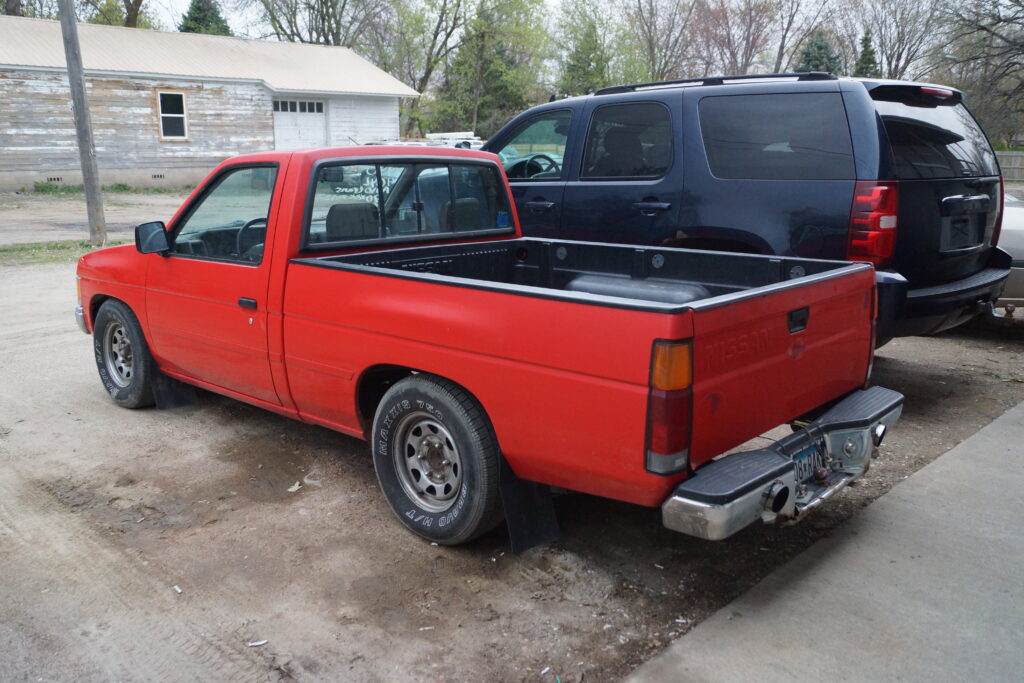
11. **Nissan Hardbody Desert Runner**
Walk onto any used car lot today, and most of the Nissan Hardbody trucks you’ll encounter are probably showing serious battle scars—beat-up, dinged, and with high mileage from years of relentless tough use. They were, after all, built to be utilitarian workhorses. But then there was the Hardbody Desert Runner, a model that truly stood out from its more humble siblings. It projected an image far beyond just an inexpensive Japanese pickup; it had the swagger of a stylish, compact utility vehicle that could genuinely go toe-to-toe with competitors like Jeep.
Recognized in the late 1980s and 1990s for its rugged durability and that iconic boxy, aggressive styling, the “Desert Runner” variant was a special treat. Nissan, a brand with a strong heritage in off-road racing, especially in grueling events like the Baja 1000, introduced this as a 2WD, off-road-themed trim. The ingenious part? It gave buyers all the looks and feel of a legitimate 4×4 off-road truck, but without the added cost or mechanical complexity that came with actual four-wheel drive.
The Desert Runner wasn’t just a styling package; it came with some genuine upgrades. You’d find beefed-up suspension components, bigger, more aggressive tires, eye-catching sportier graphics, and protective skid plates. This combination didn’t just enhance its visual aggression; it genuinely improved its off-road capability over a standard 2WD Hardbody, making it more than just a pretty face. It was a favorite among enthusiasts who yearned for a capable yet affordable truck, boasting strong styling and enough trail capability to handle moderate adventures.
However, despite its unique appeal and genuine off-road credentials for a 2WD, finding these trucks in pristine condition today is like finding a needle in a haystack. While you might catch glimpses of them immortalized in a few nostalgic photos or even some classic action movies, that’s largely the extent of their presence in the collective consciousness these days. Collectors, it seems, have largely moved on, leaving this once-proud contender in need of serious TLC.
Car Model Information: 2024 Nissan Frontier SV
Name: Datsun truck
Manufacturer: Nissan
Production: unbulleted list
Class: Compact car
Layout: FR layout
Predecessor: Datsun 6147
Successor: Nissan Navara
Categories: All-wheel-drive vehicles, All articles lacking reliable references, All articles with unsourced statements, Articles lacking reliable references from September 2016, Articles with short description
Summary: The Datsun truck is a compact pickup truck made by Nissan in Japan from 1955 through 1997. It was originally sold under the Datsun brand, but this was switched to Nissan in 1983. It was replaced in 1997 by the Frontier and Navara. In Japan, it was sold only in Nissan Bluebird Store locations.
Get more information about: Datsun truck
Buying a high-performing used car >>>
Brand: Nissan Model: Hardbody
Price: $42,999 Mileage: 255 mi.
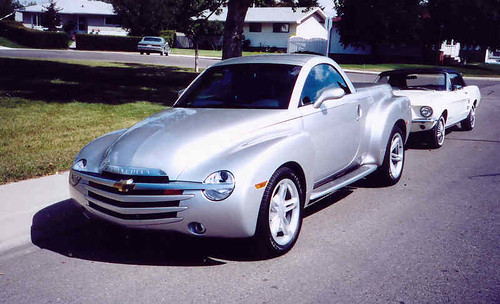
12. **Chevrolet SSR**
Seriously, what on earth was Chevrolet thinking when they dreamed up, designed, and actually put the SSR into production? Sure, it was the early 2000s, a time when automotive design was taking some wild, unconventional turns, but that doesn’t necessarily justify this particular exercise in retro-futurism gone rogue. The SSR was, undeniably, an interesting concept—one that, perhaps, should have remained exactly that: a tantalizing concept sketch on a designer’s desk, rather than a physical vehicle you could buy.
When it first debuted, there was a buzz amongst some collectors, who, in a moment of optimistic delusion, believed the Chevy SSR would become a highly valuable future classic. Its over $50,000 price tag seemed, to them, like a worthwhile investment into a unique piece of automotive history. Unfortunately for those hopeful few, that prediction didn’t just miss the mark; it was spectacularly wrong. It’s an oddity, certainly, but not necessarily a treasure.
The Chevrolet SSR, which stands for Super Sport Roadster, was truly one of the most unique and unconventional vehicles ever to roll out of a General Motors factory. Produced for a mere four years between 2003 and 2006, the SSR was a retro-styled convertible pickup truck, attempting to blend hot rod aesthetics with some semblance of utility. The reality, however, was that it ended up being far more of a collector’s oddity—a curiosity to point at—than a mainstream success capable of serious work.
Visually, the SSR was a head-turner, albeit sometimes for the wrong reasons. Its curvy, throwback design was clearly inspired by Chevy’s Advance Design trucks from the late 1940s, giving it an undeniable vintage flair. It featured an impressive, engineering-heavy retractable hardtop roof—a feat for any vehicle, let alone one with a truck bed—and a two-seat cabin that was surprisingly refined for its time. The truck bed itself, covered with a lockable tonneau, offered more in the way of style and novelty than actual practical utility, cementing the SSR’s role as a vehicle built for show, not for heavy towing or hauling.
Car Model Information: 2004 Chevrolet SSR LS
Name: Chevrolet SSR
Manufacturer: Chevrolet
Production: 2003–2006
ModelYears: 2003–2006
Assembly: Lansing, Michigan
Class: Pickup truck
BodyStyle: ubl
Platform: GMT360
Related: ubl
Layout: Front-engine, rear-wheel drive layout
Engine: ubl
Transmission: ubl
Wheelbase: 116.0 in
Abbr: on
Length: ubl
Width: 78.6 in
Height: ubl
Designer: ubl
Categories: All articles needing additional references, All articles with unsourced statements, Articles needing additional references from July 2008, Articles with short description, Articles with unsourced statements from August 2023
Summary: The Chevrolet SSR (Super Sport Roadster) is a retro-styled and retractable hardtop convertible pickup truck manufactured by Chevrolet between 2003 and 2006.
During the 2003 and 2004 model years, the SSR used General Motors’ 5.3 L 300 hp (224 kW; 304 PS) Vortec 5300 V8. Performance was 7.7 seconds for 0–60 mph (0–97 km/h) with a 15.9 second 1⁄4 mile (402.3 m) time at 86.4 mph (139.0 km/h).
For the 2005 model year, the SSR used the 390 hp (291 kW; 395 PS) LS2 V8 engine also used in the C6 Corvette, Trailblazer SS, and Pontiac GTO, now offering a manual transmission option, the six-speed Tremec, for the first time. Performance improved dramatically with the LS2; the 6-speed manual version had an advertised 0–60 mph (97 km/h) acceleration time of 5.29 seconds. In addition, GM badges were added to the vehicle.
For 2006, output of the LS2 increased to 395 hp (295 kW; 400 PS).
Get more information about: Chevrolet SSR
Buying a high-performing used car >>>
Brand: Chevrolet Model: SSR
Price: $20,899 Mileage: 54,685 mi.
Read more about: $50,000 Mistake: 14 Essential Rules to Master When Buying a Car Out of State

13. **Hummer H2 SUT**
Now, for those who might argue that a Hummer doesn’t truly qualify as a pickup truck, let’s direct your attention to the SUT versions—the Sport Utility Truck variants. These models clearly make the case that yes, indeed, the H2 absolutely belongs in this discussion. Regardless of that debate, the H2 is firmly considered a truck in this context, but unfortunately, that hasn’t done anything to halt the Hummer’s precipitous decline in popularity. These days, it seems no one, not even the most eclectic collectors, is eager to get near these notoriously fuel-thirsty beasts.
The Hummer H2 SUT was a declaration—bold, brash, and unapologetically over-the-top, representing a pickup variant of the already outrageous standard H2 SUV. Produced by General Motors from 2005 to 2009, the H2 SUT took everything people either passionately loved or vehemently hated about the original H2 and then gave it a functional, albeit niche, twist by grafting a truck bed onto the back of its hulking body. It was an exercise in excess, wrapped in a military-inspired package.
At first glance, the H2 SUT looked almost identical to its SUV sibling from the front. You had that massive grille, the incredibly high stance, the wide-body presence, and that unmistakable military-inspired design language borrowed directly from the original Hummer H1. But from the B-pillars backward, it transformed into a four-door crew cab pickup, featuring a short, 4.5-foot cargo bed at the rear. This compact bed space, however, was cleverly compensated for by GM’s addition of a Midgate—a fold-down rear wall between the cab and the bed—allowing the bed to extend into the cabin when the rear seats were folded down, thus somewhat increasing its limited utility.
Under the hood, the H2 SUT was powered by a 6.0-liter V8 engine in its earlier models, churning out around 325 horsepower, which was later upgraded to a more potent 6.2-liter V8 in 2008, pushing output to a healthier 393 horsepower. Power was routed through a 4-speed automatic transmission, later upgraded to a 6-speed in subsequent years, and the SUT featured full-time four-wheel drive with a low-range transfer case. This formidable drivetrain ensured it was genuinely capable off-road, despite its colossal size and prodigious weight, making it a true, if thirsty, all-terrain monster that few collectors now bother with.
Car Model Information: 2003 Hummer H2 Base
Name: Hummer H2
Manufacturer: AM General
Production: 2002–2009
ModelYears: 2003–2009
Assembly: Mishawaka, Indiana,Kaliningrad,designer = Clay Dean (2000)
Class: Full-size SUV
BodyStyle: Sports utility vehicle,pickup truck
Platform: GMT800
Related: Chevrolet Silverado,Chevrolet Avalanche,Chevrolet Tahoe,Chevrolet Suburban,Cadillac Escalade
Layout: Front-engine, four-wheel-drive layout,four-wheel drive
Engine: General Motors LS-based small-block engine#LQ4
Transmission: 4L60E,4-speed 4L65E automatic (2005–2007),automatic transmission
Wheelbase: 122.8 in
Abbr: on – 6.2 L
Length: 203.5 in
Width: 81.3 in
Height: 2002–03: {{convert,77.8,in,mm,0,abbr=on
Weight: {{convert,6400,lb,kg,0,abbr=on
Categories: 2000s cars, AM General vehicles, All-wheel-drive vehicles, All articles needing additional references, Articles needing additional references from January 2024
Summary: The Hummer H2 is a full-size off-road SUV that was marketed by Hummer and built in the AM General facility under contract from General Motors from 2002 until 2009. It is based on a modified GMT820 GM three-quarter-ton pickup truck in the front and a half-ton 1500 frame in the rear. A four-door pickup truck version with a midgate that opens the vehicle’s interior to the external cargo bed was introduced for the 2005 model year as the H2 SUT (sport utility truck).
Get more information about: Hummer H2
Buying a high-performing used car >>>
Brand: Hummer Model: H2
Price: $12,490 Mileage: 152,679 mi.
Read more about: The 10 Most Dependable SUVs for Family Buyers: What Mechanics and Owner Reports Reveal About Long-Term Reliability in 2025
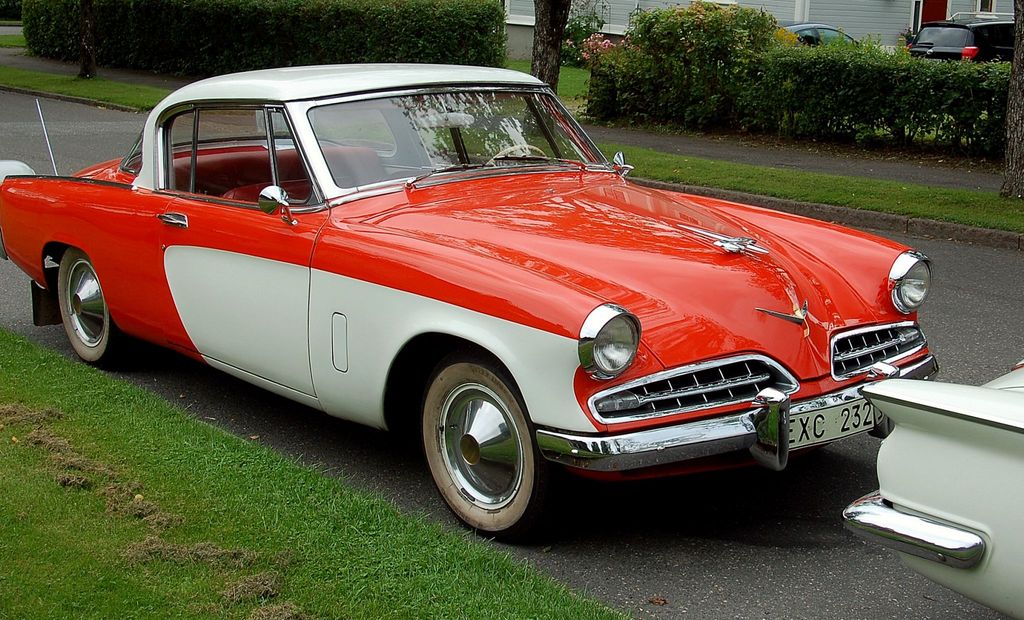
14. **Studebaker Champ**
In the annals of American automotive history, Studebaker was far from a forgotten name; quite the opposite, in fact. It stood as one of America’s leading car manufacturers throughout the 1940s and 1950s, a pillar of the industry. However, among Studebaker’s extensive lineup of passenger cars, pickups were a rare sight, few and far between. It was precisely this gap that led to the creation of the Champ: a truck designed to be modernized and upgraded, truly ahead of its time for the year it was produced.
The Studebaker Champ was a pickup truck produced by the Studebaker Corporation from 1960 to 1964. It’s often remembered today as a quirky and somewhat visionary vehicle in the competitive American truck market, demonstrating Studebaker’s ambition beyond just passenger cars. Primarily known for its automobiles, Studebaker aimed to make a significant splash in the fiercely contested pickup segment, and thus the Champ was conceived to directly compete with the established giants like Ford, Chevrolet, and Dodge.
The Champ was meticulously designed to appeal to a broad spectrum of buyers, offering a compelling blend of distinctive styling, practical utility, and solid performance for its era. What truly set it apart was its unique and remarkably modern design, especially for the early 1960s. The truck boasted a clean, sleek look, characterized by a more rounded front end and a gracefully sloped windshield, a stark contrast to the predominantly square-edged, utilitarian pickups that were common at the time. This curved styling of the Champ was considered genuinely innovative, giving it a far more streamlined and car-like appearance compared to its more blocky contemporaries.
Unfortunately, despite its forward-thinking design and Studebaker’s earnest efforts, the Champ couldn’t withstand the company’s eventual downfall, which ultimately led to its demise. It quickly became another fascinating, yet ultimately overlooked, chapter in the automotive industry’s forgotten past. Collectors today often bypass the Champ, perhaps unaware of its historical significance or simply preferring more conventionally iconic trucks, leaving this once-modern marvel largely uncelebrated.
Read more about: The Resurgent Roar: Unearthing Eight Forgotten Luxury Car Brands Poised for a Modern Comeback
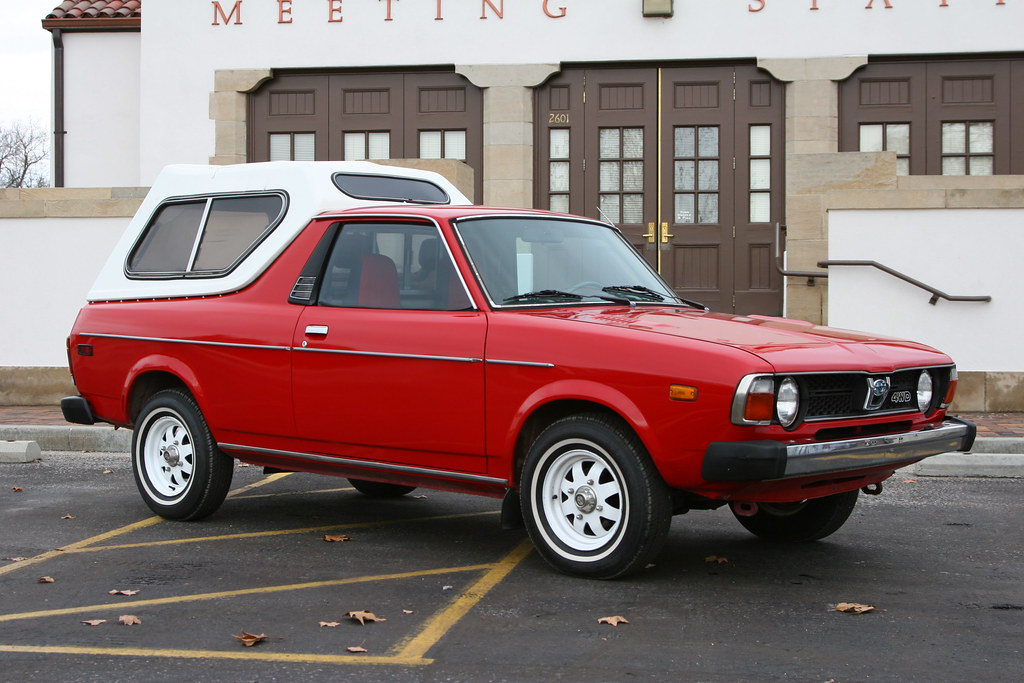
15. **Subaru Brat**
Anyone who experienced the freewheeling decades of the 1970s and 1980s can undoubtedly tell you all about the Subaru BRAT. During its heyday, the BRAT (which famously stood for Bi-drive Recreational All-terrain Transporter) was the quintessential small, economical hybrid, a delightful cross between a nimble car and a functional truck. It was a common sight on roads across America, accessible and affordable for the middle class, and remarkably practical for a variety of uses, from commuting to light hauling and weekend adventures.
However, as tends to happen with unique vehicles, the car community, over time, may have simply grown weary of the BRAT. This eventual shift in public interest likely contributed to its gradual disappearance from the mainstream and the somewhat negative opinions it now, surprisingly, faces among certain enthusiasts. Perhaps its quirkiness was too much for some, or it simply failed to evolve in a rapidly changing market, but its star definitely faded.
The Subaru BRAT was a truly quirky, compact utility vehicle produced by Subaru from 1978 to 1987. It was ingeniously designed to combine the practical utility of a pickup with the agile nimbleness of a small car. Essentially, it was a 4×4 car-based pickup, specifically built to appeal to those who desired a practical, off-road-capable vehicle that also offered the fun and easy drivability of a passenger car. The BRAT’s unique design and surprisingly capable performance quickly cemented its status as a cult classic and a memorable, notable part of Subaru’s burgeoning history in the U.S.
The Subaru BRAT was fundamentally based on the Subaru Leone, a small, reliable car that served as the platform for many of Subaru’s early models. The BRAT featured a distinctively short, two-door pickup body, complete with a functional bed at the back that was perfect for carrying small loads. But its most iconic and truly unique feature was undoubtedly the pair of rear-facing jump seats mounted directly in the bed. These allowed passengers to sit in the truck bed—a sight not common in other pickup trucks—adding significantly to its fun, offbeat, and undeniably memorable appeal. The BRAT’s design was a masterclass in combining practicality with an infectious quirkiness that left a lasting impression in its time.
Under the hood, the BRAT was powered by Subaru’s signature 1.6-liter flat-four engine, their distinctive boxer engine configuration. This engine produced around 70 horsepower, which, while not a powerhouse, was more than sufficient for its compact size and light duties. It was typically offered with either a 4-speed manual or a 3-speed automatic transmission, and crucially, it came standard with Subaru’s now-famous all-wheel-drive system, granting it genuine off-road capability. With decent ground clearance, the BRAT could handle light off-roading with impressive ease, making it an incredibly versatile vehicle for rural dwellers and outdoor enthusiasts alike, a true testament to Subaru’s early spirit of adventure.
So, there you have it: a look at some of the trucks that, for various reasons, just couldn’t quite win over the masses, whether they were modern contenders struggling against stiff competition or classic models fading into obscurity. But here’s a crucial kicker: even the most popular, best-selling trucks aren’t immune to their own set of pitfalls, often revealed only after ownership. It’s easy to get swept up in the hype and shiny marketing, but it’s essential to look beneath the surface, as some experts warn.
According to Michael Kruse, a DUI attorney with extensive experience in cars and driving safety, the seemingly invincible RAM 1500, despite its large towing capacity and attractive interior, has a reputation for being less dependable. He points to research indicating “above-average repair incidents and expensive service problems, especially on its air suspension system,” suggesting that owners might face significant repair costs that diminish the vehicle’s long-term value. Tyler Williams, president at All American Billet, a company that deals with car repairs, further corroborates this, highlighting common issues like “the cam and lifter failure issue” in the Hemi V8, which can lead to costly engine rebuilds or replacements, sometimes ranging from $4,000 to $8,000.
Even the king of the hill, the Ford F-150, particularly versions equipped with turbo engines, comes with its own set of expert-warned caveats. Kruse acknowledges their power but raises doubts about their long-term durability and performance. He notes that “turbo-charged engines tend to consume oil above the normal levels and are very expensive to fix once they have gone bad.” Williams adds to this, specifically citing the 5.4L 3-valve Triton V8 in 2004-2008 models, which was plagued by “spark plugs breaking off in the head, timing chain issues and cam phaser failures,” all leading to labor-intensive and expensive repairs.
And let’s not forget the Chevrolet Silverado 1500. While a strong contender in the full-size segment, Kruse explains that it has “been exhibiting a pattern of transmission failures,” with owners often complaining of shifting problems that can lead to costly repairs. He also points out that its ride can be a bit mixed, with a “stiff suspension” making it less comfortable for daily driving unless you absolutely need that heavy towing capacity. So, while these trucks dominate sales, even they come with their own unique set of potential headaches that savvy buyers should absolutely be aware of.
Read more about: Score Big in 2025: 10 SUVs Delivering Jaw-Dropping Price Reductions You Can’t Afford to Miss
Ultimately, choosing a pickup truck is a deeply personal decision, one that extends far beyond just horsepower figures or brand loyalty. As Kruse wisely advises, “Shopping for a truck, one should never focus on the fancy characteristics or towing capabilities that are attractive to some until one realizes that they are out of the budget or not practical in the long run.” It’s about finding a vehicle that genuinely fits your needs, without falling victim to buyer’s remorse when the real-world challenges set in. Whether you’re chasing rugged adventure, urban utility, or a reliable workhorse, the right truck is out there—but it pays to do your homework and heed the warnings, both loud and subtle, from those who know these machines inside and out. Happy hunting!

